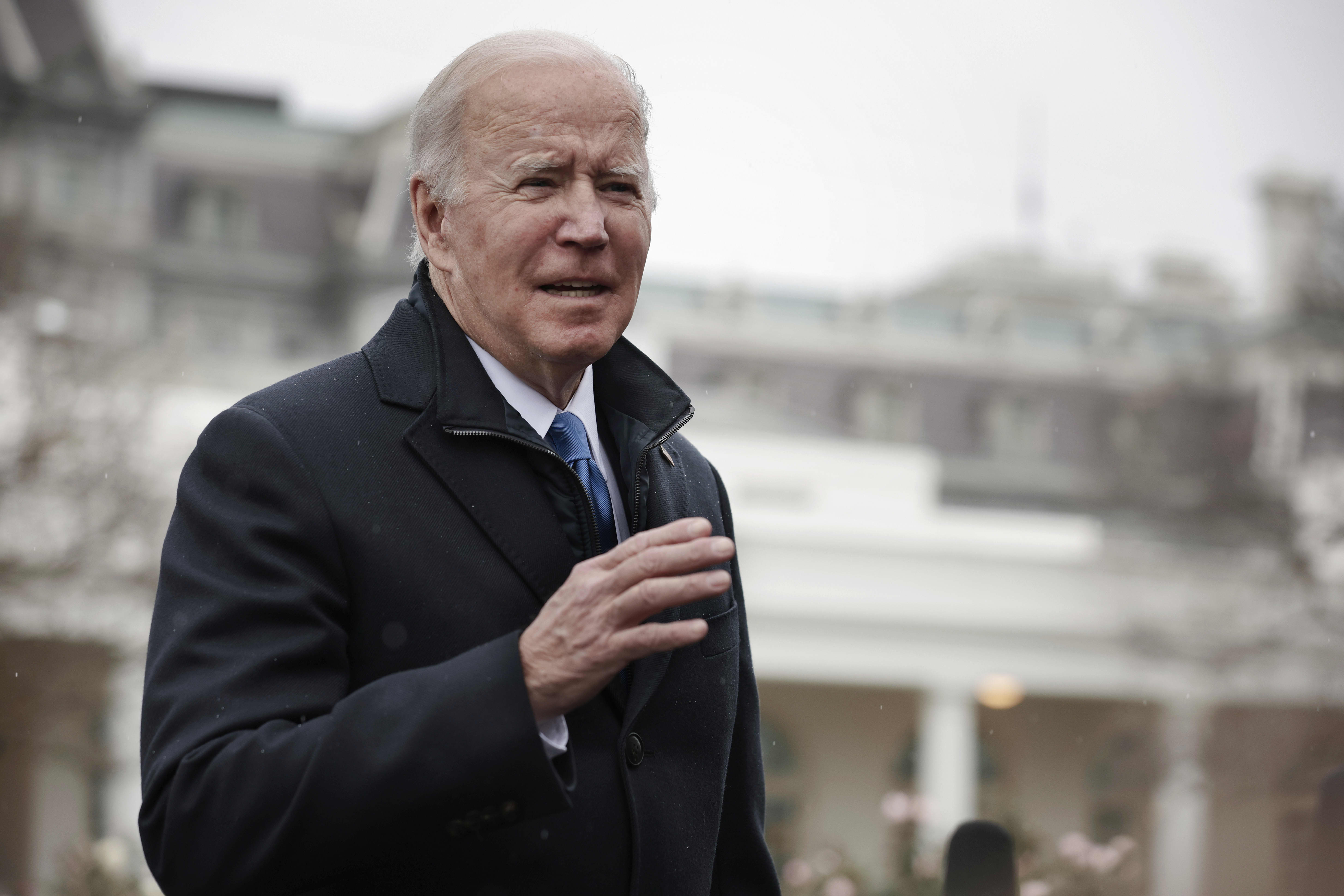Biden to expand federal fleet of EVs in bid to make government carbon-neutral by 2050

U.S. President Joe Biden stops to talk to reporters before departing the White House December 08, 2021 in Washington, DC.
Chip Somodevilla | Getty Images
President Joe Biden will sign an executive order on Wednesday leveraging the federal government’s buying power to slash its carbon emissions by 65% by 2030 and become carbon neutral by mid-century, in the latest push by the administration to address human-caused climate change.
Under the order, the White House is set to spend billions of dollars to expand its federal fleet of electric vehicles, upgrade buildings owned or leased by the government and add more clean electricity to the country’s grid.
The new plan, which will likely face pushback by some Republicans and businesses, puts the government on track to run on carbon-zero electricity by 2030 and achieve net-zero greenhouse gas emissions by 2050.
The government will spend its annual buying power of $650 billion to upgrade efficiency at its 300,000 buildings and replace its fleet of 600,000 cars and trucks with electric vehicles, according to a White House fact sheet.
Biden’s directive pledges the government will transition to purchasing 100% zero-emission vehicles by 2035 for its fleet, including all light duty vehicle purchasing by 2027.
The White House said it will coordinate with American vehicle, battery and charging equipment manufacturers and installers to meet these goals. The president in November signed into law a bipartisan infrastructure plan that includes $7.5 billion to build a national network of charging stations for electric vehicles.
The order directs the government to reduce the emissions of federal buildings by 50% by 2032 and have buildings reach net-zero emissions by 2045, as well as develop of at least 10 gigawatts of new U.S. clean electricity production by 2030.
The order also includes a “buy clean” initiative that directs the government to promote the use of products with lower emissions, in an effort to expand the market for sustainable and low-carbon goods made in the U.S.
“By transforming how the federal government builds, buys, and manages its assets and operations, the federal government will support the growth of America’s clean energy and clean technology industries,” the White House said.
The administration also highlighted how some agencies are already working to meet the goals of the executive order.
For instance, next year the Pentagon is set to finish one of the country’s largest solar panel array projects on the Edwards Air Force Base in Southern California. The project will add 520-megawatts to the grid and create more than 1,000 union and construction jobs, the administration said. Additionally, its solar installation and battery energy storage project at the Pacific Missile Range Facility in Hawaii — the nation’s largest 100% clean energy microgrid — is set to finish in 2022.
Sen. Tom Carper, D-Del., chair of the Environment and Public Works Committee, said Biden’s order will move the U.S. closer to reaching its shared climate change goals and strengthen the clean energy sector.
“Putting the weight of the federal government behind reducing emissions is the right thing to do,” Carper said in a statement. “States should follow the federal government’s lead and implement their own emissions reduction plans.”




